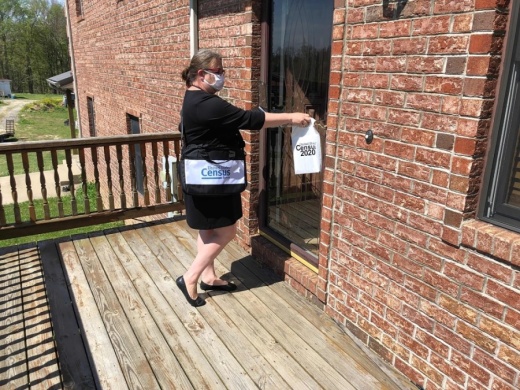So far, the 2020 census has received a 61.9% response rate, and the U.S. Census Bureau plans to do a nationwide campaign in July using flyers, social media, advertising and grassroots efforts to push additional self-response participation, especially in areas where the response rate is low, said Al Fontenot, associate director for decennial census programs, and Tim Olson, associate director for field operations, in a July 8 media briefing on the 2020 census.
For individuals who have not responded, one of about 500,000 census takers, known as enumerators, will visit their household to collect responses, a process known as the nonresponse follow-up, Olson and Fontenot said.
The follow-up is the largest operation the bureau does during the census, Olson said. The follow-up will run between Aug. 11-Oct. 13—postponed from May 13-July 31 because of the coronavirus—and involves a census taker conducting a five- to seven-minute in-person interview, he said.
“The primary activity happening as we speak in our area census offices is getting everyone who has accepted a job offer to follow through and complete the fingerprint process [and be ready for the] training for Aug. 11, the beginning of the nonresponse in the field,” Olson said. “That training for enumerators begins July 31.”
Planning the follow-up interviews—along with conducting other census activities such as counting college students—during the coronavirus pandemic has been a challenge, Olson and Fontenot said. Bureau leadership has had to consider three questions for activating in-person interviewing: Is it safe to work, are there levels of public engagement and are census takers willing to work?
To answer these questions, the bureau has been tracking national, state and local data about the coronavirus and reopening plans as well as acquiring more than 40 million personal protection equipment items—including 2.4 million masks, 14.4 million individual gloves and 3.6 million hand sanitizer bottles—Olson and Fontenot said.
To prepare for the Aug. 11 start date for follow-up interview, the census has created a three-phase soft launch, Fontenot said. About 10,000 census workers at six census offices began training July 7 for Phase 1A and will collect data starting July 16. Phase 1B will involve training 10,000 employees at another six offices beginning July 14 with field collection to start July 23. Phase 2 will launch field data collection in about 40 cities July 31 with training to begin July 21.
Other updates Olson and Fontenot provided included the following:
- Census employees who interact with the public will be required to wear a mask, regardless of their location or geography.
- The mobile questionnaire assistance program will launch July 13 at grocery stores, libraries and pharmacies where it is safe to do so and will be modified as needed based on local, current coronavirus conditions.
- Operations to count people experiencing homelessness will be conducted Sept. 22-24.
- Facilities that requested in-person responses for the group quarter enumeration—which involves counting people in correctional facilities, student housing and nursing facilities—began July 1 and will end Sept. 3.
The results are then used to determine federal funding allocation and redistricting decisions government representatives make at the federal and local levels, all of which could affect residents, he added.





